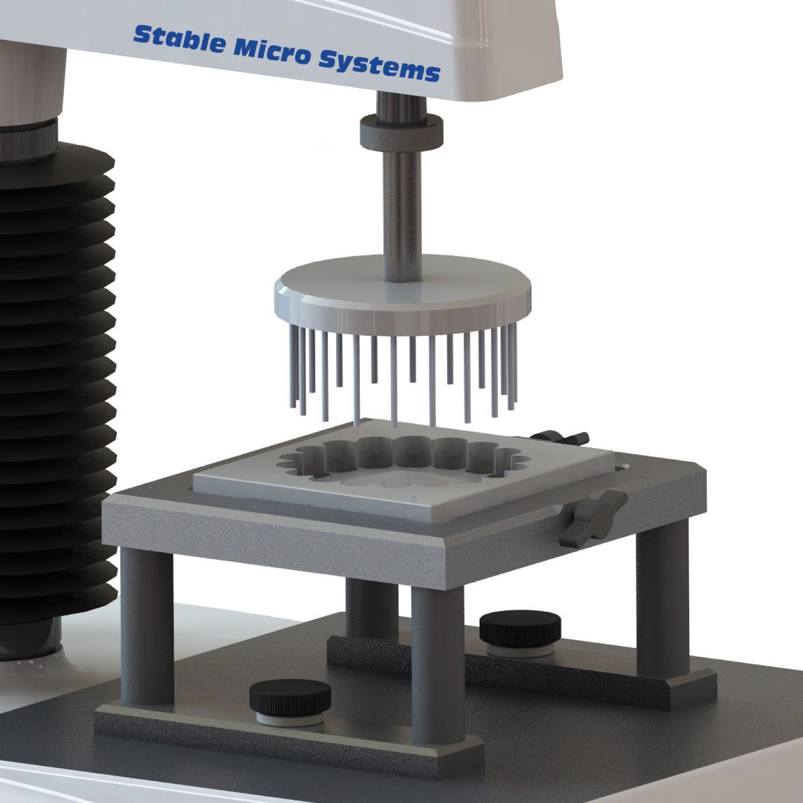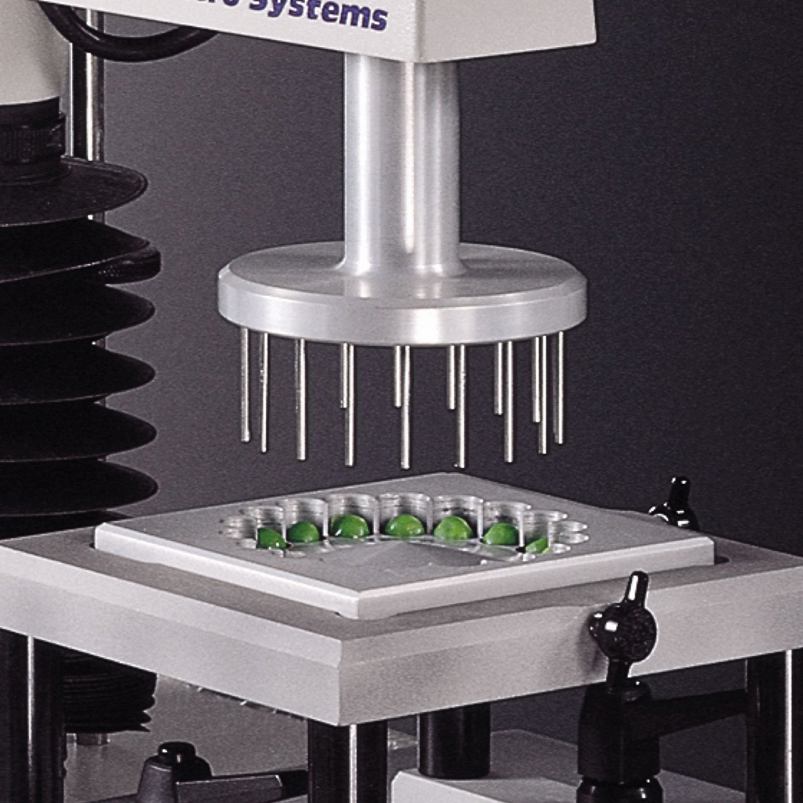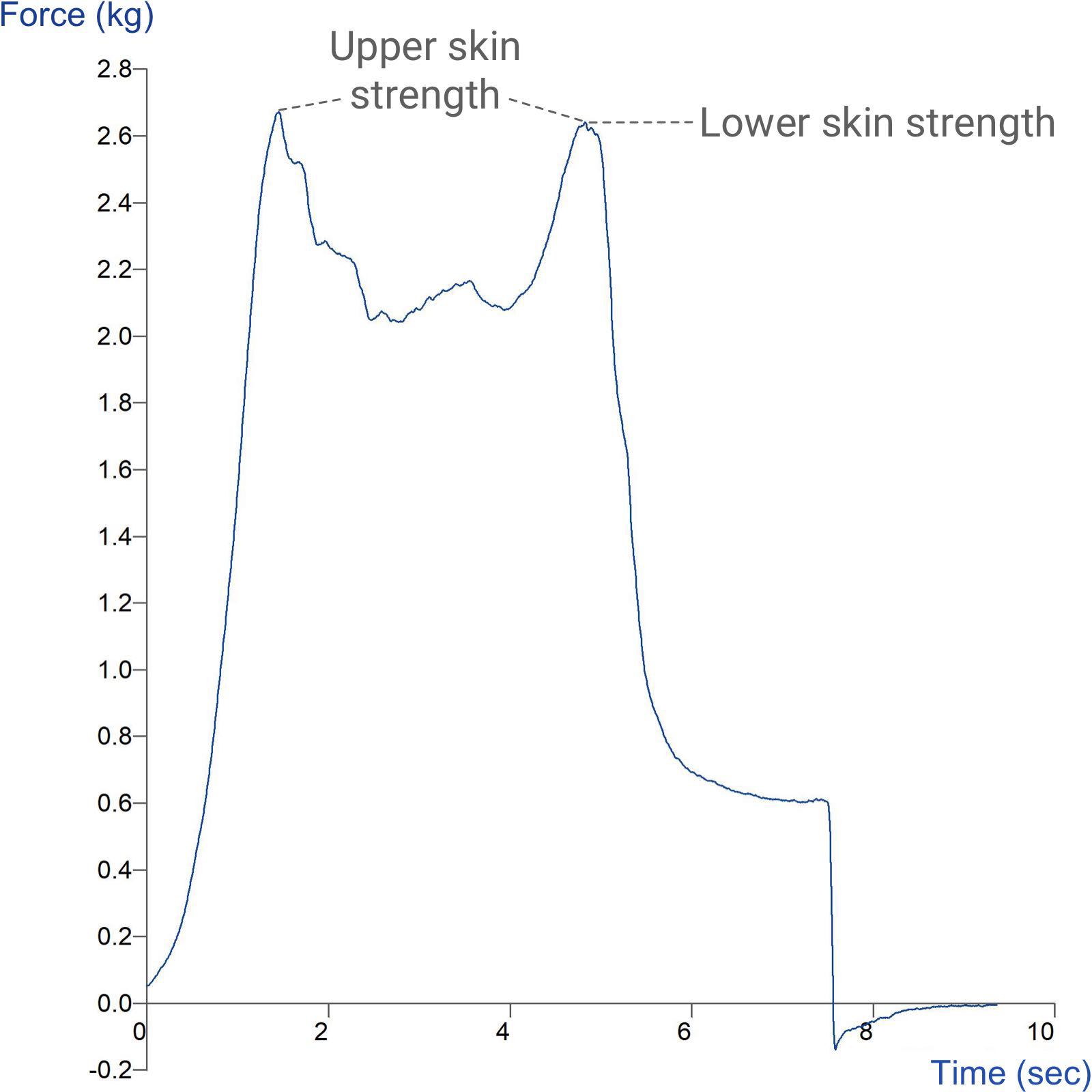Product overview
The measurement of pea firmness is important for several reasons, especially in the food industry and agricultural sectors. Pea firmness is a crucial quality attribute that impacts various aspects of processing, distribution, and consumer satisfaction. Here's why measuring pea firmness matters:
Harvest timing: The firmness of peas can indicate their maturity and readiness for harvest. Harvesting peas at the right level of firmness ensures optimal taste, texture, and nutritional content. Measuring firmness helps farmers determine the best time to harvest, leading to high-quality produce.
Quality assessment: Firmness is a key indicator of pea quality. Consumers expect peas to have a certain level of crispness and tenderness. Measuring firmness helps ensure that peas meet these quality expectations, leading to a positive consumer experience.
Processing efficiency: Pea firmness affects the efficiency of processing operations such as blanching, freezing, and canning. Peas that are too soft can break apart during processing, leading to loss of integrity and reduced product quality. On the other hand, peas that are too firm might require more energy and time for processing.
Distribution and shelf life: Firm peas are less prone to damage during transportation and handling. Measuring and maintaining firmness helps extend the shelf life of peas by reducing the likelihood of bruising or deterioration during distribution.
Consumer preference: The texture of peas, including their firmness, directly impacts consumer preference and satisfaction. Peas that are too soft or too hard may not be well-received by consumers, leading to decreased sales and brand reputation.
Product innovation: Measuring pea firmness provides valuable data that can be used to develop new pea varieties with improved texture and taste. Researchers can use firmness measurements to breed peas that align better with consumer preferences.
Standardisation: Measuring firmness allows for standardization in the pea industry. Defining firmness standards ensures consistency across different batches and suppliers, leading to a more predictable product for processors and consumers.
Research and development: Food scientists and researchers use firmness measurements to understand the effects of different growing conditions, processing methods, and storage conditions on pea quality. This information guides the development of best practices and improvements in the supply chain.
Quality control: Pea processors and manufacturers use firmness measurements as a part of quality control processes. Ensuring that peas meet firmness specifications helps maintain a consistent product and reduces the likelihood of customer complaints.
Cost efficiency: Measuring firmness helps identify inefficiencies in the production and processing of peas. For example, if peas are harvested too early or too late, it can result in wasted resources and reduced yields. Proper timing based on firmness measurements can improve cost efficiency.
In summary, measuring pea firmness is essential for maintaining quality, improving processing efficiency, meeting consumer preferences, and ensuring the success of pea-related industries. It serves as a valuable tool for farmers, processors, researchers, and manufacturers to optimise their practices and deliver products that meet high standards of taste and texture.
A penetration test could well be considered the most simple of all tests. As the size of the probe surface area is constant this often means that the sample size does not need to be carefully controlled unlike compression testing. However, when faced with a non-homogeneous or natural product (such as peas), product penetration is highly compromised as a smaller surface area for measurement is also more sensitive to variations in sample structure and low reproducibility and misleading data can be obtained. Results may show a wide variance between maximum and minimum forces depending on whether the probe meets with, for example, an air pocket, hard particle or internal structure variation.
This rig measures the force to simultaneously penetrate up to 18 samples. The insert has 18 indentations surrounding a cone which allows the samples to easily locate into the test positions. Puncture strength and penetration force are measured and the penetration distance set so that the probes penetrate completely through the sample.
Other applications using this rig include beans and confectionery samples.
How does the Multiple Pea Test Rig work?
Ideal sample form
Material that can be presented for testing in the form of small spheres of approximately the same diameter.
Benefits and limitations
- Averaging effect can be obtained from the testing of multiple samples within one test which is necessary when samples are variable
Technical information
Installation
Full installation instructions are provided within the Education Zone of the latest Exponent/Connect software version and on the technical information sheet accompanying this product.
Chemical compatibility
Stable Micro Systems probes and attachments are commonly made from four materials: anodised aluminium (AA6082 T6), stainless steel (316 T), Delrin (acetyl copolymer) and Perspex (polycarbonate).
In general use, probes and attachments made from these materials will be suitable for testing food products and inert non-food materials.
The four materials listed above are not universally resistant to all types of chemicals and as such the compatibility of the probe/attachment material with the product (to be tested) must be established to prevent damage to the probes and attachments. If the compatibility of the product with the probe is unknown to the customer then the chemical information about the product (Material Safety Data Sheet or Product Data Sheet) should be submitted to Stable Micro Systems. Stable Micro Systems will then assess the suitability of the probe/attachment material for use with the product and advise accordingly. If this advice is not sought then Stable Micro Systems will not accept liability for probes/attachments damaged by chemical attack from the product being tested.
Cleaning and maintenance
All probes and attachments may be cleaned in warm (or hand hot) water using a mild detergent. A soft brush may be used but abrasive cleaning aids should be avoided. Stable Micro Systems products should not be microwaved or cleaned in a dishwasher.
Screw threads should be lightly lubricated after drying using a light lubricant, e.g. petroleum jelly, mineral oil. This will aid the fitting and unscrewing of the item. Each component of a probe or attachment should be wrapped separately when stored, to avoid scratching or chipping. This will safeguard against any unnecessary damage to the accessory.



